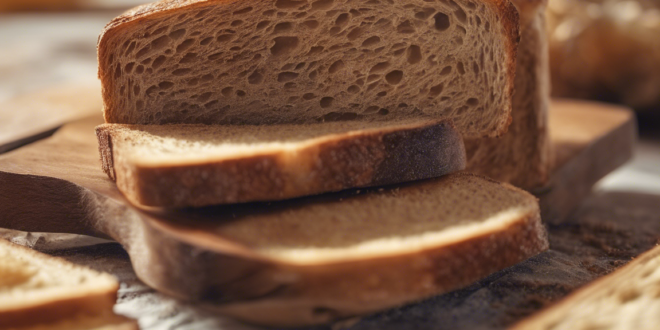Toasted vs. Untoasted Bread: A Comprehensive Guide to Digestibility and Nutrition
Bread is a staple in many diets, but the debate between toasted and untoasted bread continues to intrigue health-conscious individuals. Whether you’re looking to optimize your digestion, improve nutrient absorption, or simply enjoy your favorite slice, understanding the differences between toasted and untoasted bread can make a significant impact on your overall nutrition.
The Science Behind Bread Toasting
Toasting bread is more than just a culinary preference; it’s a process that fundamentally transforms the bread’s chemical structure and nutritional profile. When bread is exposed to high temperatures, several interesting changes occur that can affect its digestibility, taste, and potential health benefits.
Digestibility: Toasted vs. Untoasted Bread
Experts have long investigated the digestive implications of toasting bread. The toasting process can actually alter the bread’s glycemic index and potentially make it easier for some individuals to digest. The heat breaks down some of the bread’s complex carbohydrate structures, which may reduce the strain on your digestive system.
Nutritional Changes During Toasting
Contrary to popular belief, toasting doesn’t significantly decrease the bread’s nutritional value. In fact, some studies suggest that toasting can have both positive and negative effects on bread’s nutritional profile. The process can:
- Slightly reduce the bread’s moisture content
- Create a lower glycemic response
- Potentially reduce certain enzyme inhibitors
Glycemic Index Considerations
One of the most significant findings in bread research relates to the glycemic index. Toasted bread typically has a lower glycemic index compared to untoasted bread, which means it causes a slower and more moderate rise in blood sugar levels. This can be particularly beneficial for individuals managing diabetes or looking to control their blood sugar response.
Digestive Enzyme Interactions
The toasting process can modify how digestive enzymes interact with bread. Heat can break down some complex carbohydrate structures, potentially making the bread easier to digest for individuals with sensitive digestive systems. However, this can vary depending on individual metabolic differences and the type of bread being consumed.
Gluten and Toasting: What You Need to Know
For individuals with gluten sensitivities, it’s crucial to understand that toasting does not eliminate gluten from bread. While the heat might change some structural components, it does not make gluten-containing bread safe for those with celiac disease or severe gluten intolerances.
Potential Benefits of Toasted Bread
Research suggests several potential benefits of consuming toasted bread:
- Lower glycemic response
- Potentially reduced enzyme inhibitors
- Enhanced flavor and texture
- Possible improved digestibility for some individuals
Bread Type Matters
The type of bread you choose significantly impacts its nutritional value and digestibility. Whole grain breads, sourdough, and sprouted grain breads often provide more nutrients and may be easier to digest compared to heavily processed white breads, regardless of whether they’re toasted or untoasted.
Expert Recommendations
Nutritionists and digestive health experts recommend:
- Choosing high-quality, minimally processed breads
- Considering individual digestive tolerance
- Monitoring personal response to different bread preparations
- Balancing bread consumption with a varied diet
Individual Variations in Digestibility
It’s essential to recognize that digestibility can vary significantly between individuals. Factors such as gut microbiome, metabolism, existing digestive conditions, and overall health play crucial roles in how your body processes toasted or untoasted bread.
Conclusion: A Personalized Approach
While scientific research provides insights into bread digestibility, the ultimate determination comes down to personal experience. Pay attention to how your body responds to different bread preparations and consult with healthcare professionals if you experience persistent digestive issues.
Final Recommendations
1. Experiment with different bread types and preparation methods
2. Listen to your body’s response
3. Prioritize nutrient-dense, minimally processed breads
4. Consider your individual health goals and digestive needs
 Good Calories Guide GoodCalories Guide focuses on nutrition, healthy eating, and overall wellness. The site offers practical insights into evidence-based dietary practices, including tips for specific lifestyles such as veganism, keto, and family-friendly meal planning. It also addresses unique nutritional needs for individuals with conditions like diabetes or food allergies, while providing quick and accessible recipes to make healthy living a sustainable and enjoyable choice.
Good Calories Guide GoodCalories Guide focuses on nutrition, healthy eating, and overall wellness. The site offers practical insights into evidence-based dietary practices, including tips for specific lifestyles such as veganism, keto, and family-friendly meal planning. It also addresses unique nutritional needs for individuals with conditions like diabetes or food allergies, while providing quick and accessible recipes to make healthy living a sustainable and enjoyable choice.


